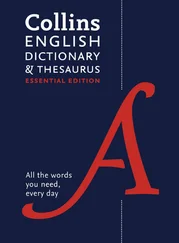a happy child
a strange boy
a joyful occasion
what they look like:
a large tree
a spotty dress
a gorgeous beach
what they sound, smell, taste or feel like:
a noisy party
a stinky cheese
a delicious cake
a hard seat
what colour they are:
a yellow bag
dark hair
green leaves
where they come from:
our German relatives
my American friend
a northern accent
what something is made from:
chocolate cake
a wooden box
a velvet scarf
Comparative adjectives and superlative adjectives
When you want to make a comparison between people or things, you need to use comparative or superlative adjectives. In the examples below, taller is the comparative form of tall and tallest is the superlative.
Rory is tall.
Rory is taller than his brother.
Rory is the tallest boy in his class.
Comparative
The comparative shows that a person or thing has more of a certain quality than another person or thing. In this case it is the quality of being tall.
You make the comparative form of an adjective by adding the suffix ‑er at the end.
dull + ‑er = duller
green + ‑er = greener
clever + ‑er = cleverer
Not all comparatives are made like this, though. If the adjective is quite a long word, you use more instead.
beautiful → more beautiful
eccentric → more eccentric
interesting → more interesting
Superlative
The superlative shows that a person or thing has the most of a certain quality out of a group of people or things.
You make the superlative form of an adjective by adding the suffix ‑est at the end.
dull + ‑est = dullest
green + ‑est = greenest
clever + ‑est = cleverest
If the adjective is quite a long word, you use most to make the superlative.
beautiful → most beautiful
eccentric → most eccentric
interesting → most interesting
Good and bad
The adjectives good and bad don’t follow the normal rules for comparative and superlative forms.
There are spelling rules about adding suffixes, and you can see these on pages 81– 85.
Adverbs
An adverb is a word that tells you something about a verb. They describe the way in which something is done. Many adverbs end with the letters ‑ly.
Some adverbs tell you how:
Ella runs quickly.
The children sing loudly.
Some adverbs tell you where:
We live here.
The plane flew south.
Some adverbs tell you when:
She is going on holiday tomorrow.
Phone the police immediately.
Some adverbs tell you how much:
I really want to see that film.
He was completely exhausted.
Some adverbs tell you how often:
You never come out to play football.
My sister and I always argue about who sits in the front seat of the car.
Some adverbs go at the beginning of a sentence. These give a comment on the whole sentence:
Fortunately, it didn’t rain.
Sadly, Jackie can’t come on Friday.
Prepositions
A preposition is a word that is used before a noun or a pronoun to describe how things are related or connected to each other. For example, prepositions can tell you:
• where a person or thing is:
a cat in the garden
a book on the table
a sock under the bed
Other prepositions like this include:
• the movement of something or someone:
The train came into the station.
We pushed through the crowd.
Other prepositions like this include:
• they also show how things are related in time:
I haven’t seen my auntie since last week.
Conjunctions
A conjunction is a word that is used to join two words or two parts of a sentence together. There are two main types of conjunction.
Co-ordinating conjunctions
A co-ordinating conjunction joins two things that are as important as each other:
I love fish and chips.
It was dry so I walked home.
You can have a biscuit or a cake.
She has neither mother nor father.
It can also show a contrast between two things:
Joe is having a birthday party but he hasn’t invited me.
Subordinating conjunctions
A subordinating conjunction introduces a clause which is less important than the main part of the sentence:
The teacher was angry because the pupils would not pay attention.
Mark read his book while he waited for his mum to arrive.
I must tell you some exciting news before we get started.
Some dogs go a bit crazy when it’s windy.
Pronouns
A pronoun is a word that is used in place of a noun. You use a pronoun instead of repeating the name of a person, place or thing:
Rachel lives next door to me. Rachel is in my class.
> Rachel lives next door to me. She is in my class.
That is the book I am reading just now. The book is very funny.
> That is the book I am reading just now. It is very funny.
I like to sit in the garden. The garden is very sunny.
> I like to sit in the garden. It is very sunny.
Personal pronouns
You use a personal pronoun instead of the subject or object of a sentence:
She is good at maths.
Nobody likes him.
Possessive pronouns
You use a possessive pronoun to show that something belongs to a person or thing:
We had to move out when our house was flooded.
I think the blue jacket is mine.
The dog buried its bone in the garden.
Relative pronouns
You use a relative pronoun instead of a noun to join two different parts of a sentence. The relative pronouns are who, whom, whose, which and that. They introduce information about a noun in an earlier part of the sentence. This noun is known as the antecedent. You use who, whom and whose when the antecedent is a person, and which and that when it is not a person.
who: You use who when the antecedent is the subject of the second clause.
I have an aunt who lives in Australia.
whom: You use whom when the antecedent is the object of the second clause.
It was the same man whom we had seen earlier.
whose: You use whose to show that something belongs to the antecedent.
Scott has a brother whose name is Jamie.
which: You use which when the antecedent is not a person.
We took the road which leads to the sea.
that: You use that when the antecedent is not a person.
George brought the sandwiches that he had made the night before.
Determiners
A determiner is a word that you put in front of a noun to show more clearly what you are talking about. There are different kinds of determiners:
Articles
The word the is called the definite article.
the robot
the traffic
the footballers
The word a is called the indefinite article.
a caravan
a giraffe
a scooter
If the word after a begins with a vowel, you use an instead:
an animal
an umbrella
an orange pencil
Other determiners
Other types of determiners give different information about the noun:
• the distance between the speaker and the thing they are talking about:
• who owns the thing:
Читать дальше












